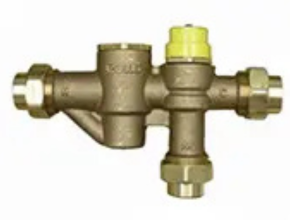What is a Marine?
Marine engines are the heart and soul of any watercraft — from small recreational boats to massive cargo ships. These powerful machines are designed to withstand the harsh conditions of the open sea while providing reliable and efficient propulsion. Understanding the different types of marine engines and their key features is essential for anyone who owns, operates, or maintains a watercraft. Let’s take a deep dive into the world of marine engines and what sets them apart from their automotive counterparts.

What are the key differences between marine engines and automobile engines
It’s important to remember that marine engines differ significantly from car and other vehicle engines. This is down to the fact they are built for very different environments. Marine engines are typically subject to much harsher conditions. As a result, they require modifications that ensure they can stand up to the environment they need to operate within.
How do marine engines work
Much like automobile engines, the purpose of a marine engine is to enable a vessel to propel itself via internal combustion. Fuel is injected into the cylinders where it ignites. The resulting combustion pushes a piston that turns a crankshaft, which then powers the boat’s propeller.
A big difference here is that the mechanical energy on a boat is directly distributed to one gear — as opposed to being split across four or more for a car. This means it’s more beneficial for marine engines to utilize low-end torque at a more constant rate to power through water than a varying percentage of horsepower intermittently as you would with a car on a road.
Key Characteristics of Marine Engines:
- Reliability: Marine engines must be highly reliable, as they are often the sole source of power for vessels, especially in remote areas.
- Durability: They need to withstand the corrosive effects of saltwater and the constant vibration and stress experienced at sea.
- Efficiency: Marine engines are designed to be fuel-efficient, as fuel is a significant cost for vessel operators.
- Power Output: The power output of a marine engine varies depending on the vessel’s size and purpose. They can range from small outboard motors for recreational boats to massive diesel engines powering large cargo ships.
Technical Features
SERIES: A_M – B_M
POWER: Up to 2400kW
VOLTAGE: Up to 690 V
FRAME: 71mm to 560mm
POLE: 2 to 16
FREQUENCY: 50Hz, 60Hz or variable speed
PROTECTION DEGREE (IP): 55, 56, 65 (only cast iron)
COOLING METHOD (IC): 411, 410, 416
AMBIENT TEMPERATURE: -55°C to +60°C
ENCLOSURE MATERIAL:Aluminum (A5M-A6M) Cast iron (B5M-B6M)
BEARING: Antifriction, sleeve (from frame 355)
APPLICATIONS: Auxiliaries, Fi-Fi system, Winch
STANDARD / CERTIFICATE: IEC 60034
Main Options:
- PT100 in stator windings
- Anti-condensation heaters
- Special voltage
- Arrangement for vibration sensors
- Insulated bearing and earthing brush
- Lubrication system for sleeve bearing
Source: www.marellim
Read More Articles:




